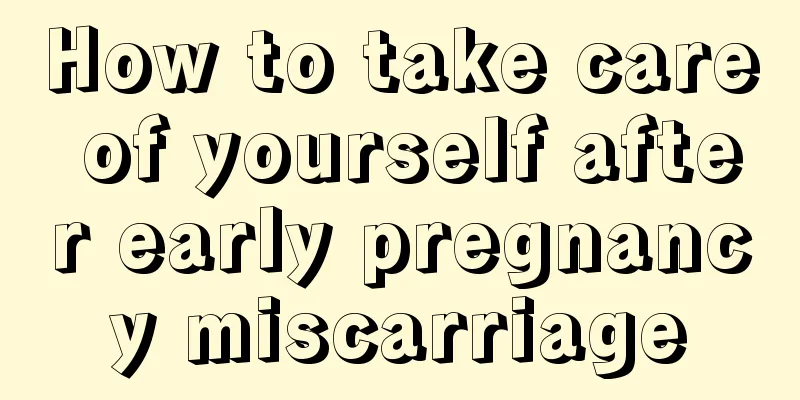Luteinized ovarian cyst

|
Ovarian luteinized cysts, also known as ovarian lutein cysts, are a comprehensive lesion, mainly including corpus luteum cysts, corpus albicans cysts and theca lutein cysts. Because the ovaries are very important organs for women, once abnormalities are detected in this area, patients will certainly be very worried. So, what is luteinized ovarian cyst? Let’s take a look below. Causes of lutein cysts include: (1) The influence of placental gonadotropin. About 50% of patients with lutein cysts have vesicular fetal masses and choriocarcinoma, and a few patients have twins. The trophoblasts of these patients produce large amounts of HCG, which causes a highly luteinized reaction in the ovarian follicular cysts. (2) The function of the hypothalamus-pituitary-gonad axis is reduced, the feedback function of the gonads is blocked, and the pituitary gland secretes excessive luteinizing hormone, which promotes the enlargement and luteinization of the follicles, secretes a large amount of fluid and forms cysts. (3) Long-term or excessive use of ovulation-inducing drugs such as clomiphene can cause lutein cysts. Symptoms: Luteinized ovarian cysts generally do not cause symptoms, but occasionally cause acute abdominal pain due to acute torsion. After the fetal mass is removed, the luteinized cyst will disappear on its own within 7-4 months as the HCG level decreases. Luteinized cysts are often bilateral, and may also exist independently in one ovary. They vary greatly in size, with smaller cysts having a diameter of 3 cm and larger cysts often reaching 15 to 20 cm in diameter. Multicystic septa, uneven surface, lobed, thin-walled, containing clear fluid. Because the wall is thin, it may break with a little pressure. The cross-section of the cyst is atrial, and the cavity is often filled with clear to light yellow to brown fluid, and the cyst is often attached with a layer of yellow jelly-like substance. symptom 1. Discomfort in the lower abdomen: This is the initial symptom before the patient feels a lump in the lower abdomen. Due to the weight of the tumor itself and the influence of intestinal peristalsis and changes in body position, the tumor pulls on its pedicle and pelvic infundibulum ligament in the pelvic cavity, causing the patient to have a feeling of fullness and falling in the lower abdomen or iliac fossa. 2. Increased abdominal circumference and abdominal tumors: These are the most common complaints. The patient notices that his or her clothes or belt seem tight and small, and then notices the enlargement of the abdomen; or he or she feels it occasionally in the morning, and only then finds a swelling in the abdomen when he or she presses on the abdomen, coupled with abdominal distension and discomfort. 3. Abdominal pain: If the tumor has no complications, there will be very little pain. Therefore, abdominal pain felt by patients with ovarian tumors, especially those that occur suddenly, is mostly caused by torsion of the tumor pedicle, or occasionally by tumor rupture, bleeding or infection. In addition, ovarian cysts often cause abdominal pain and leg pain, and the pain often causes patients to seek emergency treatment. 4. Menstrual disorders: Generally, ovarian cysts, even bilateral ovarian cysts, do not cause menstrual disorders because they do not destroy all normal ovarian tissues. Some uterine bleeding is not endocrine in nature. It may be caused by ovarian tumors that change the pelvic blood vessel distribution, causing endometrial congestion; or it may be caused by ovarian malignant tumors directly metastasizing to the endometrium. Menstrual disorders caused by endocrine tumors are often combined with other secretory influences. 5. Compression symptoms: Huge benign ovarian cysts fill the entire abdominal cavity, increasing the intra-abdominal pressure, affecting the venous return of the lower limbs, and can lead to edema of the abdominal wall and bilateral lower limbs; while malignant ovarian tumors fixed in the pelvic cavity compress the iliac vein, often causing edema of one side of the lower limb. The pelvic and abdominal organs are compressed, causing dysuria, urinary retention, urgency or difficulty in defecation. |
<<: Pubic pain in late pregnancy means birth is imminent
>>: What to eat in late pregnancy to help the fetus grow faster
Recommend
Blisters on one side of the vulva
When small blisters appear on the vulva, it is ju...
Caesarean section scar redness and swelling
Caesarean section is a way for pregnant women to ...
What is the educational significance of the Double Ninth Festival activities for children? What are the problems in family education?
The educational process begins at birth and lasts...
Breast epithelial hyperplasia
Women must pay attention to their breast health a...
Is it good to wear body shaping underwear frequently? What are the hidden dangers?
Nowadays, girls have higher and higher requiremen...
How to fatten up a ginger cat? Why doesn't the little ginger cat eat?
Orange cats are actually Chinese rural cats, whic...
What should women pay attention to after menopause
Menstruation every month can make people feel ver...
What happens if there is blood in the vagina after sex?
After sexual intercourse, some female friends oft...
Why take Yousiyue after abortion?
For women who undergo abortion to terminate their...
Causes of hair loss on top of girls' heads
Hair loss is a very common phenomenon and can be ...
Is breast adenosis a serious disease?
I believe that more and more women are beginning ...
Can severe cervical erosion be cured?
The cervix is a very important reproductive par...
What dishes are delicious and nutritious with shrimp? How to marinate shrimp to make it tender and smooth
Shrimp is a common ingredient in life. It is wide...
What causes chest pain on the right side of a woman?
Women's chests are prone to pain, but not all...
How to reduce facial wrinkles
As we age, our skin will develop wrinkles, which ...









